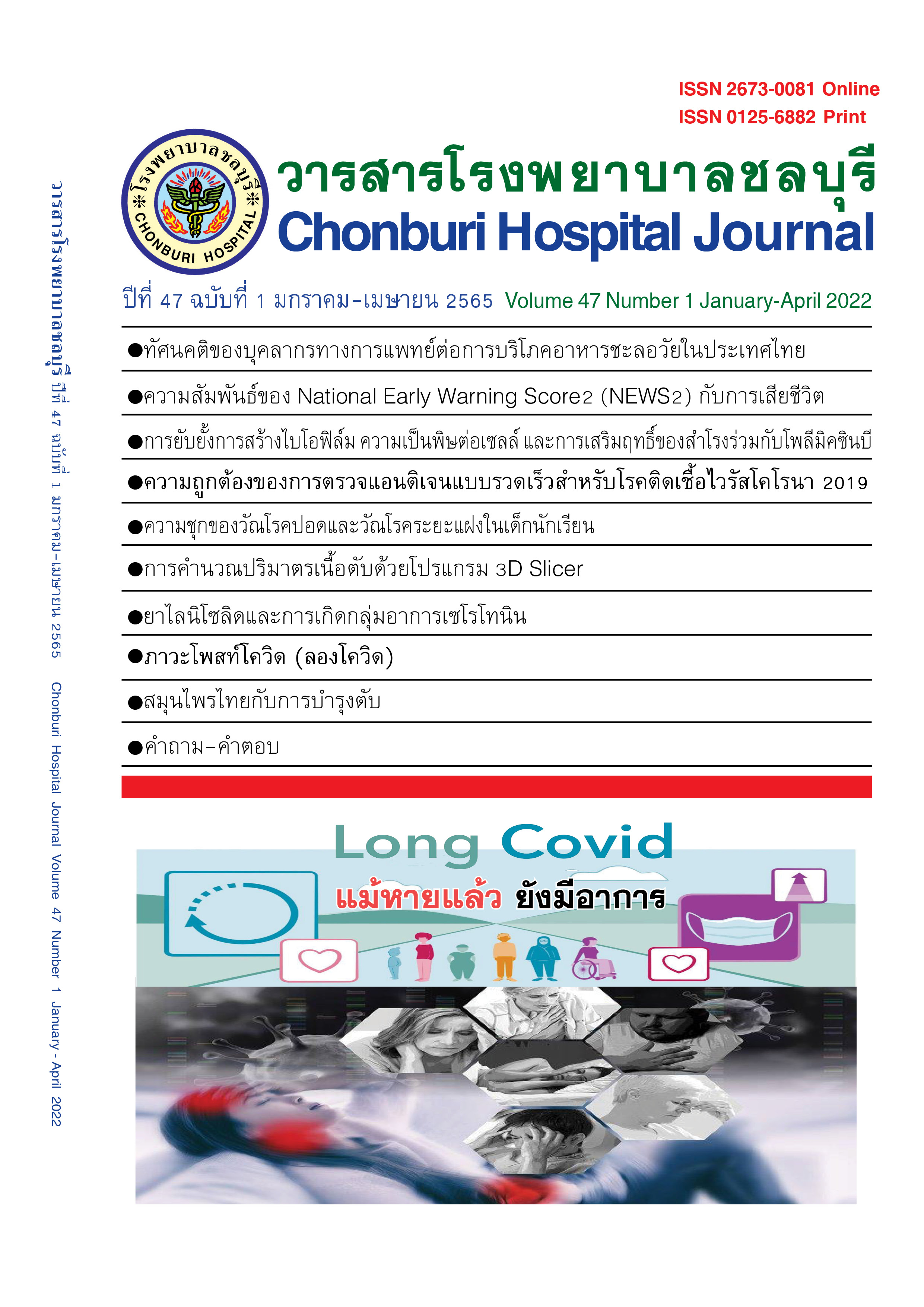The Long COVID
Abstract
COVID-19 is a global pandemic of coronavirus disease 2019 (SARS-CoV-2). Most infected people have no symptoms or mild symptoms, similar to other respiratory viral infections such as fever, cough, runny nose, sore throat, headache, shortness of breath and rapid breathing. Most infected people receive palliative treatment. 5-8% of patients experience pathology in the lung tissue. Impaired lung function. Since the infection was discovered in Huhan, Democratic People's Republic of China, in December 2019 to date. Worldwide, 513,624,000 cases have been reported and a total of 6,23 million have died . In Thailand, according to the Ministry of Public Health, there were 4.24 million infections and 28,526 deaths as of April 30, 2022.
When viral infection occurs The virus stays in the human body for life. There is more and more medical data suggesting that COVID-19 infection is not just an infection. He's healed and done. However, there is a chance that there will be persistent signs or new signs of abnormality. Known as Long COVID, a new abnormal symptom that persists for more than 4 weeks is believed to be caused by the coronavirus 2019 itself. Caused by long-term inflammatory processes in various body systems or autoantibodies.
Long COVID is a syndrome that occurs in up to 200 symptoms in the nervous system, heart, blood vessels. The symptoms expressed in each system vary as follows:
Respiratory system Fatigue, shortness of breath, shortness of breath
Cardiovascular system Heart palpitations, chest tightness Rapid heartbeat
Gastrointestinal tract, stomach pain, diarrhea, decreased appetite
Other symptoms that are not specific to any system. Body aches, joint pain, lack of strength, fatigue
Abnormalities found in blood tests without symptoms , such as abnormally elevated liver enzyme values Decreased filtration and kidney function Abnormal thyroid hormone function Decreased ability to control sugar levels in diabetic patients and abnormal blood clotting system, etc.
The incidence of long COVID is as high as 4.7-80% of all infected people. It can occur in patients with COVID-19 in all genders. Adults are at greater risk than children. Females are at higher risk than males. It is more common in patients with severe symptoms than in patients with mild symptoms.
If you have been infected with COVID-19 and have been treated properly until you have recovered. Do you observe for yourself that symptoms that you had while infected, such as fatigue and fatigue, persist? If the answer is "persistent," it's likely that you may be in for Long COVID.
Long COVID affects the ability to live in daily life. Performance after recovery from infection Increase the burden of long-term costs per individual. Family & Society Preventing infection Covid-19 Inevitably, it's the best. Posture prevention is the best thing you can do at this time is to protect yourself from catching COVID-19 With COVID-19 vaccination-19 Wear masks and practice social distancing while staying away from others. 1-2 Avoid crowded and poorly ventilated areas. Wash your hands.frequently Take care of your physical health and exercise regularly, get enough sleep, and if any abnormalities appear, you should immediately see a doctor for diagnosis to lead to correct and timely treatment.
Downloads
Published
Versions
- 2023-07-11 (3)
- 2022-05-02 (2)
- 2022-05-01 (1)
Issue
Section
License

This work is licensed under a Creative Commons Attribution-NonCommercial-NoDerivatives 4.0 International License.
บทความที่ได้รับการตีพิมพิ์เป็นลิขสิทธิ์ของวารสารโรงพยาบาลชลบุรี
